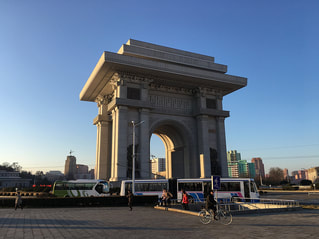NAM STRUCTURE AND ORGANIZATION
NAM was an organization that did not have formal structures like UNO and Commonwealth. It did not have a secretariat or a constitution. The movement had a unique administrative style as follows.
Coordination
The administration is non-hierarchical, rotational and inclusive, providing all member states, regardless of size and importance with an opportunity to participate in global decision making and world politics.
The country that hosts the summit holds office until the next summit. Non-aligned countries place the onus of an administrative structure on the country assuming the chair. The country is required to create or designate an entire section of the ministry of foreign affairs to deal specifically with the Non-Aligned Movement. The chair’s ambassador in the United Nations essentially functions as the ‘minister of Non-Aligned Affairs’. NAM has also created contact groups, task forces and committees to facilitate the chair’s responsibility as follows; The Coordinating BureauNon-Aligned security Caucus
The countries that make up the NAM council caucus are expected to constantly strive to adopt unified positions so that the decisions and positions of NAM are reflected in the Security Council decisions without prejudice to their sovereignty.
Joint coordinating committee
This is a coordinating committee established in 1994 and sitting in New York, whose main mandate is to promote cooperation and coordination between the NAM and the Group of 77 in promoting the interests of developing countries in international fora.
Coordination of non-aligned countries in the UN centres.
This is aimed at facilitating coordination and cooperation with the coordinating bureau and enhances the role of NAM in the international Fora.
The Troika
The concept of Troika emerged on 6th April 1997 in New Delhi, India, during the meeting of foreign ministers of NAM representing past, present and future chairs. The concept simply implies a meeting of past, present and future chairs who began to meet in September 1997 as a discussion forum.
Panel of economists
This is an ad hoc panel of economists formed from Non-Aligned countries to assess the current international economic situation from the perspective of developing countries and to identify and analyze their major issues of concern.
Documentation
This is the responsibility of the host country but after wide consultation. The host country must circulate the First Draft not later than one month before the meeting.
Decision making
The movement makes all its decisions by consensus. This concept presupposes understanding of and respect for different points of view, including disagreement and mutual accommodation. This promotes solidarity and unity of the movement.
NAM Meetings
They include the following
The growth of NAM
After the Bandung Conference of 1955 which established the movement, NAM has attracted many developing counties. A number of conferences have been held since then;
Performance of the Non-Aligned Movement
Though critics have questioned the relevance of NAM after dismantling apartheid and achieving independence, and after end of cold war, there still exist situations that require NAM’s participation. Reasons why NAM is still relevant
Reasons why NAM is still relevant
Achievements of NAM
Factors which have undermined the activities of the Non-Aligned Movement
THE COLD WAR
The Cold War refers to the strained relations that existed between the western world led principally by the United States and the communist East led by the USSR, after the Second World War.
It was so called because it was fought not with weapons, but with words, propaganda, military and financial aid to enemies of the opposing sides. Although there was no actual physical confrontation, Cold War was characterized by a conflict of the most serious and deadly kind. Causes of the Cold War.
0 Comments
|
Archives
April 2024
Categories
All
|

 RSS Feed
RSS Feed